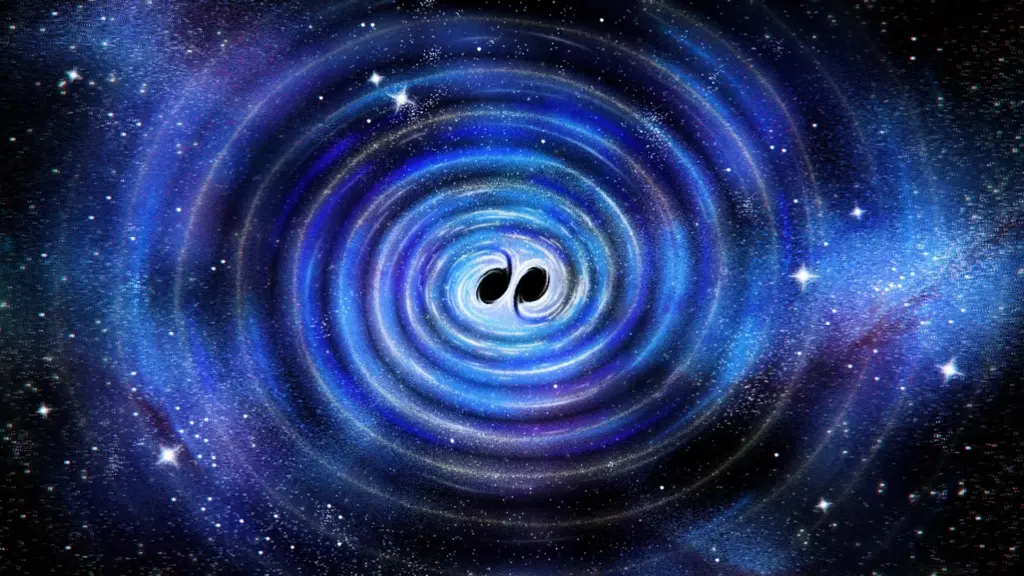
The Laser Interferometer Gravitational-Wave Observatory (LIGO) has made a significant breakthrough in astrophysics, confirming theories proposed by Albert Einstein and Stephen Hawking. Led by astrophysicists Maximiliano Isi and Will Farr from the Flatiron Institute’s Center for Computational Astrophysics in New York City, the new measurements offer unprecedented insights into black holes and the fundamental nature of space-time.
“This is the clearest view yet of the nature of black holes,” said Isi, who also serves as an assistant professor at Columbia University. “We’ve found some of the strongest evidence yet that astrophysical black holes are the black holes predicted from Albert Einstein’s theory of general relativity.” The findings were detailed in a paper published on September 10 in Physical Review Letters by the LIGO-Virgo-KAGRA Collaboration.
Understanding Black Holes and Gravitational Waves
For massive stars, black holes represent the final stage of their evolution. These cosmic phenomena are so dense that even light cannot escape their gravitational pull. When two black holes collide, they create ripples in space-time, known as gravitational waves, that propagate across the universe.
These gravitational waves are akin to sound waves from a struck bell, with each merger producing a unique “sound” that reveals the properties of the black holes involved. Scientists can detect these waves using specialized instruments at observatories such as LIGO in the United States, Virgo in Italy, and KAGRA in Japan. These instruments measure the minute changes in space-time caused by gravitational waves, allowing researchers to infer the characteristics of the black holes.
Breakthrough Measurements and Techniques
The latest gravitational waves were generated by a merger resulting in a black hole with the mass of 63 suns, spinning at 100 revolutions per second. This discovery comes a decade after LIGO’s first detection of a black hole merger. Advances in equipment and techniques have since provided a clearer view of these cosmic events.
“The new pair of black holes are almost twins to the historic first detection in 2015,” Isi noted. “But the instruments are much better, so we’re able to analyze the signal in ways that just weren’t possible 10 years ago.”
These advancements enabled Isi and his team to observe the collision from the initial contact to the final reverberations as the merged black hole stabilized, a process lasting only milliseconds. Previously, capturing these final reverberations was challenging due to their faintness.
Innovative Methods and Confirmations
In 2021, Isi spearheaded a study that introduced a novel method for isolating specific frequencies, or ‘tones,’ from black hole mergers. Although this method showed promise, the 2015 data lacked the clarity needed to confirm key predictions about black holes. With the new, precise measurements, Isi and his colleagues confidently isolated the milliseconds-long signal of the final, settled black hole, enabling more definitive tests of black hole properties.
“Ten milliseconds sounds really short, but our instruments are so much better now that this is enough time for us to really analyze the ringing of the final black hole,” Isi explained. “With this new detection, we have an exquisitely detailed view of the signal both before and after the black hole merger.”
Testing Theories and Expanding Knowledge
The new observations allowed scientists to test a longstanding conjecture that black holes are fundamentally simple objects. In 1963, physicist Roy Kerr used Einstein’s general relativity to describe black holes with a single equation, suggesting they can be characterized by just two properties: spin and mass. The enhanced data enabled researchers to measure the frequency and duration of the merged black hole’s ringing more accurately, confirming its simplicity.
Additionally, the findings provided a robust test of Stephen Hawking’s area theorem, which posits that a black hole’s event horizon can only increase in size. This theorem parallels the second law of thermodynamics, which states that entropy, or disorder, must increase or remain constant over time. Understanding black holes’ thermodynamics could lead to breakthroughs in quantum gravity, a field seeking to unify general relativity and quantum physics.
“It’s really profound that the size of a black hole’s event horizon behaves like entropy,” Isi remarked. “It has very deep theoretical implications and means that some aspects of black holes can be used to mathematically probe the true nature of space and time.”
Future Prospects and Scientific Progress
As gravitational wave detectors become increasingly sensitive, scientists anticipate uncovering more about black holes’ nature. Over the next decade, these detectors are expected to be ten times more sensitive, enabling more rigorous tests of black hole characteristics.
“Listening to the tones emitted by these black holes is our best hope for learning about the properties of the extreme space-times they produce,” said Farr, who is also a professor at Stony Brook University. “And as we build more and better gravitational wave detectors, the precision will continue to improve.”
Isi concluded, “For so long this field has been pure mathematical and theoretical speculation. But now we’re in a position of actually seeing these amazing processes in action, which highlights how much progress there’s been — and will continue to be — in this field.”







